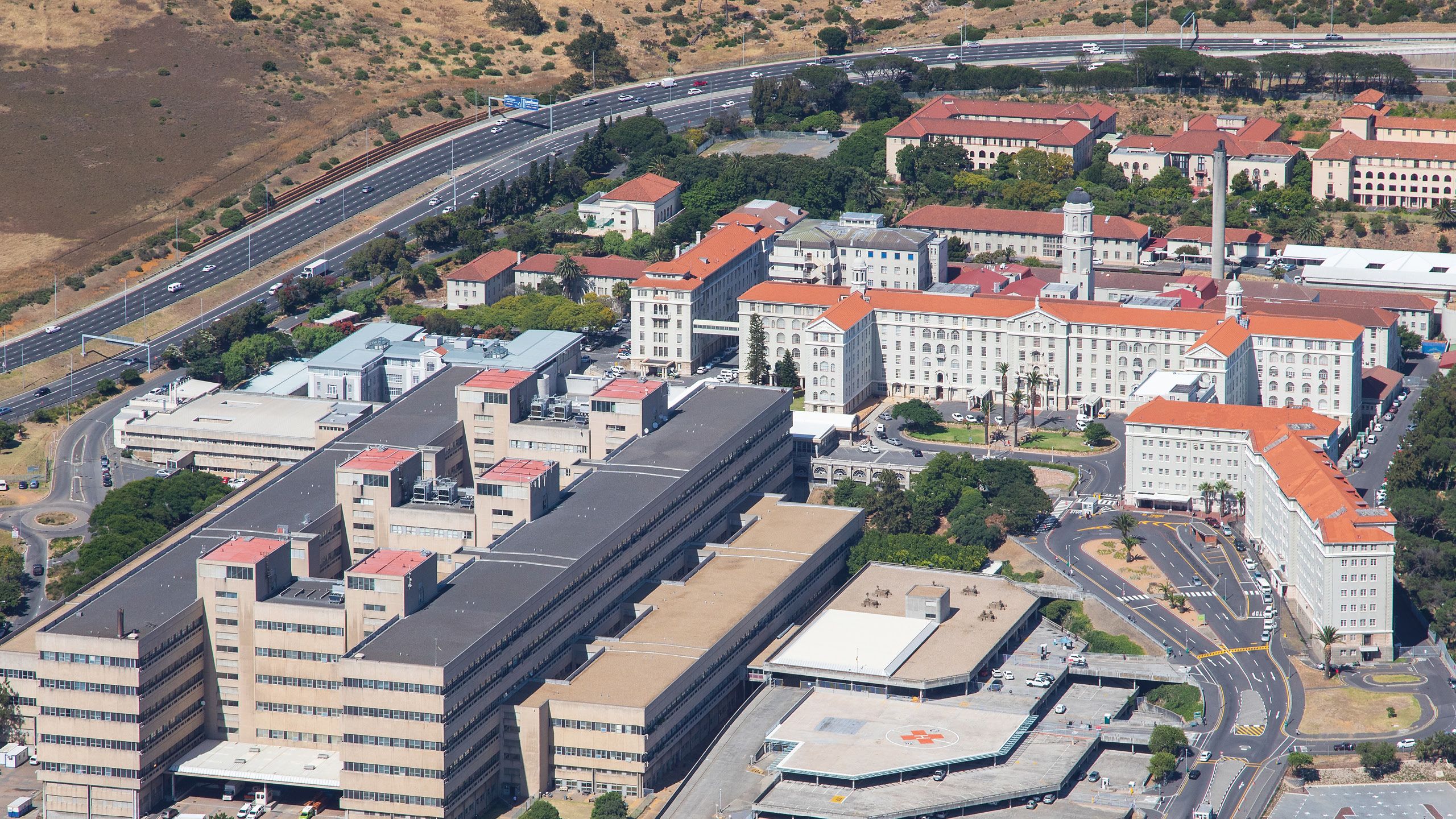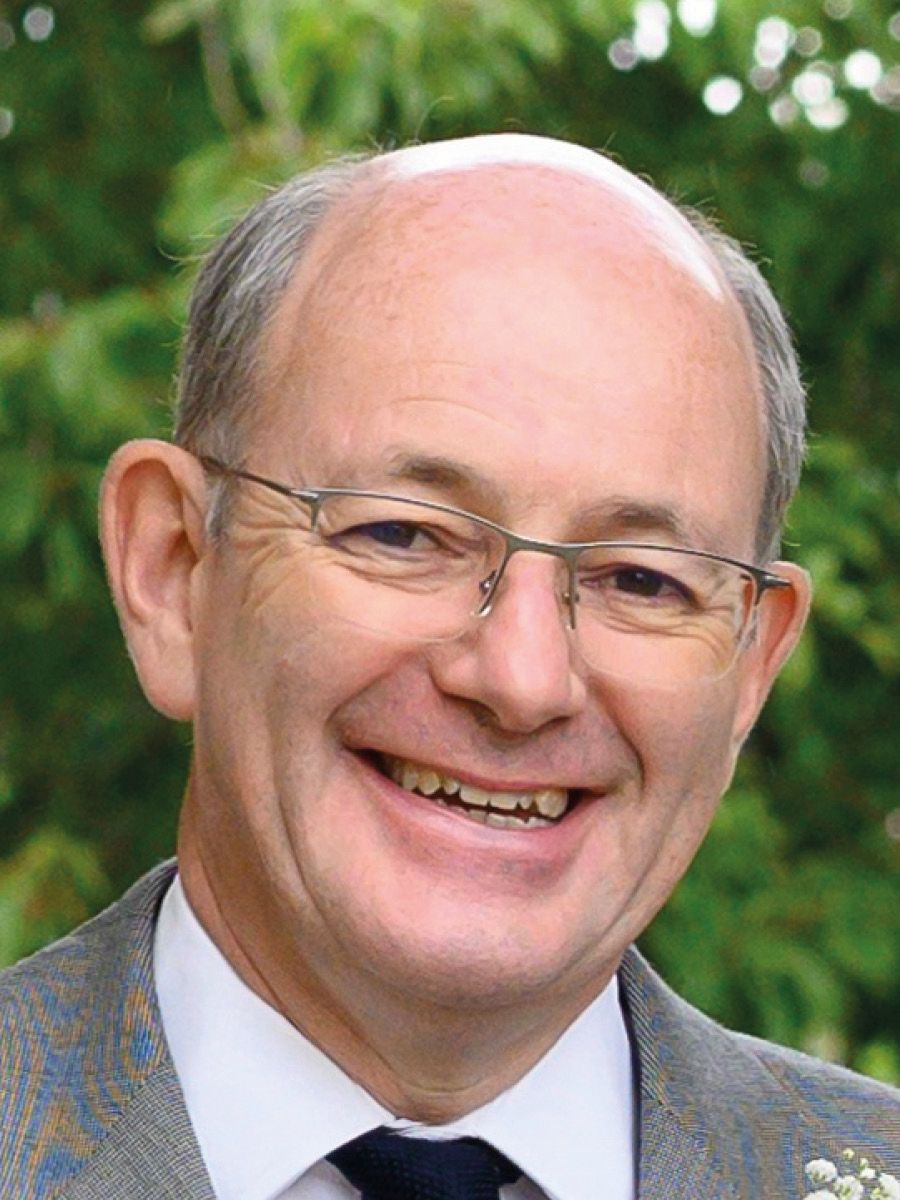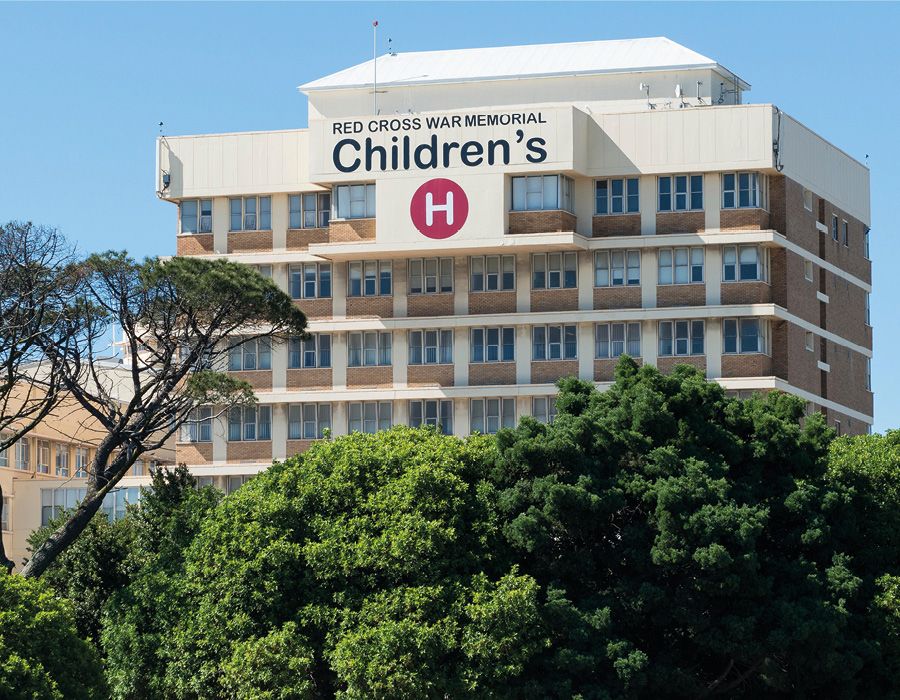Successful Hub
of Specialist surgery
From meeting teams in trauma to teaching, David Scott-Coombes
reflects on a visiting professorship in Cape Town


David Scott-Coombes: Consultant Endocrine Surgeon
and Clinical Board Director at the University Hospital of Wales in Cardiff
Frank Penman was a solicitor from England who suffered a ruptured abdominal aortic aneurysm while on holiday in Cape Town, South Africa, in 1963. He was treated at Groote Schuur Hospital (GSH). His family established the Penman Memorial Fellowship, which annually funds a visiting professor whose role is to advance medical knowledge and practice in surgery.
I visited GSH in February/March 2023. It is the academic hospital of the University of Cape Town (UCT) and a centre of excellence. My host was Professor Lydia Cairncross, Head of the Division of Surgery.
Under the watchful eye of Hygeia, daughter of Asclepius and goddess of health, stands a magnificent building. An establishment of ‘medical firsts’ including Christiaan Barnard’s first human heart transplant, GSH is the hub of specialist surgery and training, with three hospitals providing more secondary care training opportunities in the districts, and a children’s hospital.
The much sought-after UCT surgical training scheme has a reputation for excellence in training and surgery. Trainees are proud of where they train and describe it as a ‘brand’. Their expectations are clearly set – to become a competent general surgeon. Nevertheless, training in specialist surgery is not diminished. Academia is emphasised and trainees must undertake a Master of Medical Education. The abundance of trauma provides the trainees with significant opportunities and experience.
At the end of their training most surgeons enter private practice (there’s an 80:20 split) because public sector posts are scarce due to funding constraints. This is not necessarily the preference for young surgeons as it can be a lonely existence, is hard to establish and involves being on call all the time.
Surgery at GSH
The breast unit treats 600 cancer patients a year. Up to 250 have metastatic disease and are not offered surgery. For the remainder there are options for oncoplastic surgery. Twenty per cent of referrals to the breast unit are cancer related.
Incredibly, there are only two consultant colorectal surgeons working in this huge hospital with a catchment population of six million. However, this works because the acute care surgery and trauma teams deal with patients presenting with emergency colorectal disease.
This setup differs to the UK, where colorectal surgeons, many eager to come off the emergency rota, can be dismissive of the abilities of emergency surgeons to deal with colorectal emergencies. Cape Town, by contrast, is putting the needs of patients ahead of the desires of surgeons.
I visited the intestinal failure (IF) unit. Most patients had IF secondary to trauma or acute appendicitis. Home parenteral nutrition is not practical for most patients.
In the endocrine unit, surgeons and endocrinologists discussed cases of multiple endocrine neoplasia and the timing of genetic screening. All patients with medullary thyroid cancer are screened regardless of age because patients often present late.
“While I was there a fourth year registrar managed a divided brachial artery and gunshot laparotomies on his own with excellent outcomes”
When I visited the trauma unit I was introduced to a team from all over the world. I witnessed young men who were the victims of road traffic accidents or violence, and women who had suffered gender-related violence. I saw a knife still in situ in the chest, gunshot wounds to the chest and abdomen, a catastrophic head injury and a dog bite. While I was there a fourth year registrar managed a divided brachial artery and gunshot laparotomies on his own with excellent outcomes.
I learned that the trauma unit is very active in research and its published material changes practice in the field.
On the upper GI/HPB surgery front I witnessed the endoscopy list including dilatation of a very high oesophageal cancer invading the larynx. I also attended the hepatopancreaticobiliary/neuroendocrine tumour team meeting and discussed cases including small bowel neuroendocrine tumours, and gallbladder and pancreatic cancer.
I observed Professor Cairncross perform a hemithyroidectomy for a massive multinodular goitre, during which a contracted technician aided endotracheal tube placement and nerve monitoring. I also watched a transperitoneal laparoscopic adrenalectomy for Conn’s syndrome and was introduced to ‘the rod’, a handy tool for blunt dissection and retraction.
Interestingly, in the operating theatre staff wore linen scrubs and patients were draped in linen sheets. In South Africa this is the cheaper option, and disposable drapes and gowns have never been introduced.
VISITS TO DISTRICT HOSPITALS
Victoria Hospital
Senior surgeon at Victoria Hospital Eugenio Panieri introduced me to the general surgery firm, which comprises trainee surgeons and interns. I saw ischaemic legs, lymphoedema, gunshot wounds, a stabbing, colovesical fistula and port site hernia. Panieri explained that the philosophy of consultants on ward rounds was to be kind to the trainees with a touch of light-heartedness in recognition that they are immersed in a depressing world of violence, poverty, ill health and morbidity/mortality.
Mitchells Plain Hospital
Junior consultant at Mitchells Plain Nawaaz Karimbocus explained that his post was a valuable transition from trainee towards learning to cope with ‘his name at the end of the bed’. I joined the ward round – I was already getting used to young men with chest drains or folk with Foley catheters inserted into neck stab wounds.
Red Cross Memorial Children’s Hospital
The children’s hospital, established in 1956, has a history of pioneering surgery (conjoined twins, and heart and liver transplants). Head of Paediatric Surgery Alp Nomanoglu told me about the hospital’s history – for example, the trauma unit has a body scanner developed by diamond consortium De Beers to reveal concealed diamonds in miners. I visited the burns theatre – with a cholera-like bed and built-in jet showers used to debride wounds – which has established best practice and been adopted globally. The hospital attracts, and to some extent depends on, international Fellows who are self-funded.
Visit to Tygerberg Hospital, University of Stellenbosch
Dr Jenny Edge and Dr Ilna Conradie welcomed me to the medical school at the University of Stellenbosch. In the endocrine multidisciplinary meeting I was presented with a case of severe hyperparathyroidism with a retro-orbital brown tumour which expanded post-parathyroidectomy necessitating orbital decompression. As we wandered around the wards the locked steel gates at the end of every corridor reminded me of my time as Prison Surgeon in Wormwood Scrubs. In the trauma unit I met trainees from the US and South Africa, and observed how patients flowed through the unit. I saw medical students present the preoperative breast and endocrine cases and met the endocrine patients – what big goitres. I was taken out to dinner on the Atlantic coast and finally saw the true majesty of Table Mountain.

Conference and teaching
It was a pleasure to attend the two-day UCT Surgical Update Conference, which was directed at senior trainees and consultants. A presentation on ventral hernias opened my eyes to considering bariatric surgery much earlier in the pathway. I then listened with interest to presentations ranging from colorectal cancer screening to penetrating cardiac trauma.
During my time at GSH I gave tutorials/mock viva sessions with the FCS candidates and presented to the division about over-diagnosis and treatment of thyroid cancer. As well as giving tutorials to medical students on aspects of endocrinology and surgery, I gave talks on nerve monitoring and tricks to find parathyroid tumours.
I also delivered the Penman Lecture, which began with a history of Stubbs, Hunter, Owen and Darwin, and how their lives intertwined with two Indian rhinos.
To the Kingsbury Hospital meeting, I presented a selection of cases of goitre with emphasis on the assessment and management of retrosternal goitre.
Reflections
The most wonderful aspect of the visit was the friendliness and warmth extended to me. I thank every member of staff in the department of surgery for being so welcoming. I am extremely grateful to the Frank Penman Memorial Foundation for giving me this opportunity.
